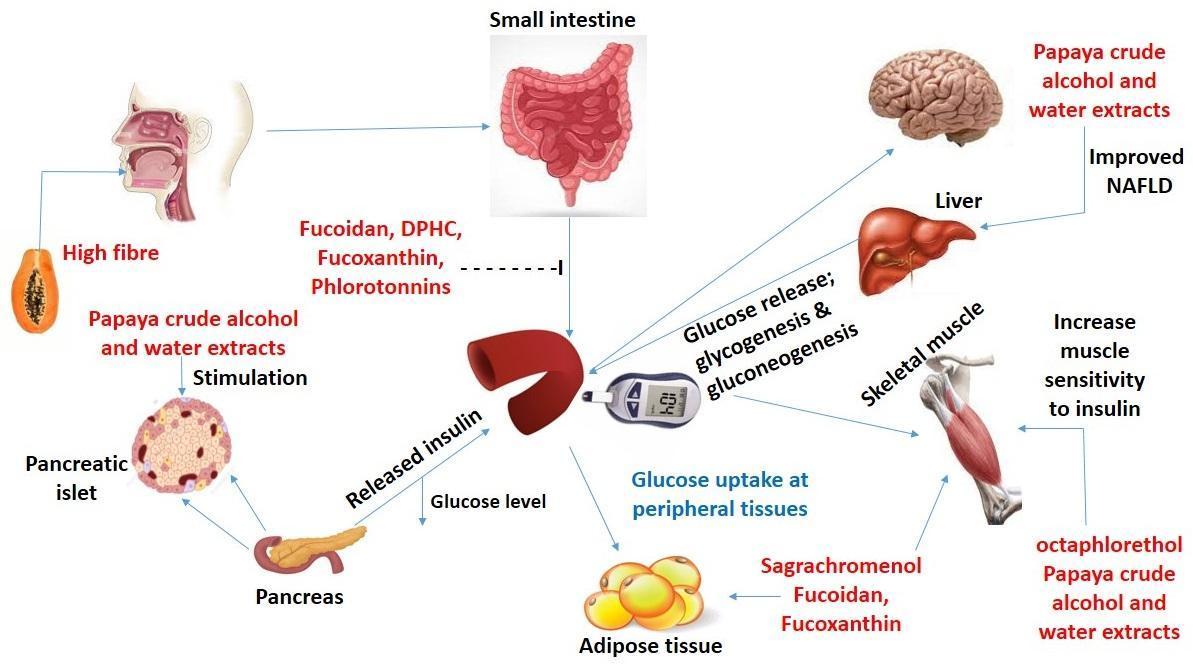Antidiabetic potential of Carica papaya L. and its constituents: From folkloric uses to products development
DOI:
https://doi.org/10.31989/bchd.v6i6.1108Abstract
Carica papaya L. is a plant that has a reputation for being antidiabetic. This review is focused on antidiabetic properties of Carica papaya. A comprehensive search was performed using various electronic databases including Researchgate, PubMed, Google Scholar, Biomedgrid.com and ScienceDirect. 224 publications were downloaded, out of which one 107 relevant publications were reviewed. The fruit, leaves, and seeds of this plant have been reported to possess antidiabetic properties at different dosages via in vivo, in vitro, and ex vivo studies. Fortified papaya cake, MPPB flour (containing C. papaya), and brotowali extract (fortified papaya leaves and sugarcane extracts) displayed significant hypoglycaemic effect. From a clinical trial, the fruit consumed after meals significantly reduced blood glucose level in a quasi-experimental study. Some bioactive compounds found in the plant's extracts have been linked to the antidiabetic effect of the plant. It has been discovered that the leaf extract contains hypoglycemic saponins, alkaloids, flavonoids, triterpenoids, and tannins. Few compounds with antidiabetic characteristics have been identified from the extracts of this plant's seeds, including hexadecanoic acid, methyl ester, 11-octadecenoic acid, N, N-dimethyl-, n-hexadecanoic acid, and oleic acid. Therefore, pawpaw fruit consumption might help to mitigate the symptoms of diabetes. For the development of new natural remedies for management and prevention of diabetes, additional studies, particularly those on the isolation of antidiabetic principles from various portions of C. papaya, will be crucial.

Keywords:Carica papaya; Antidiabetics; Phytoconstituents; Clinical trials; Papaya products
Veröffentlicht
Ausgabe
Rubrik
Lizenz
Any manuscripts or substantial parts of it, submitted to the journal must not be under consideration by or previously published in any other journal or citable form. Authors are required to ensure that no material submitted as part of a manuscript infringes existing copyrights or the rights of a third party. In submitting one's article in any form, the author has assigned the FFC publishing rights and has agreed to an automatic transfer of the copyright to the publisher. This is so that the FFC may create print option journals, for example, at the FFC’s discretion. If the author wishes to distribute their works by means outside of the FFC, for example within their community, they will have to place a request.
Correspondence concerning articles published in Functional Foods in Health and Disease is encouraged. While derivative works (adaptations, extensions on the current work, etc.) are allowed, distribution of the modified material is not allowed without permission from the FFC.